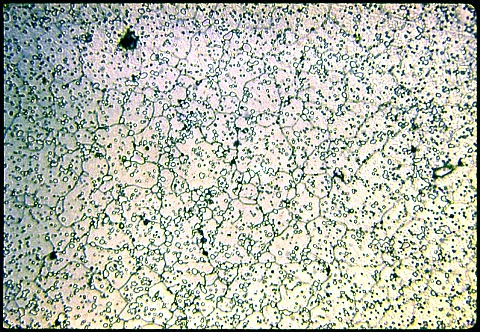INTRODUCTION
- Lesson 2 - High Alloy Steels
High alloy steels are used when a large amount of
a particular alloying adition is necessary to obtain the desired
properties, such as extreme resistance to wear, to oxidation, to
corrosion, or to heat. Often additional alloying elements must be
added to offset deleterious side effects of the primary
additions. The effects of these alloying elements are sometimes
manifested at the surface of a rather simple microstructure, and
sometimes in the interior of a complex microstructure, or vice
versa. All the photomicrographs presented here were made by me in
1962 of prepared specimens in the M.I.T. collection. High speed steel has
unusually high resistance to softening at temperatures up to
600C. It has what is called, red
hardness. The steel is hardened by quenching austenite to
martensite and then precipitating alloy carbides at about 550C.
These alloy carbides are far more resistant to coarsening at that
temperature than is cementite.
High speed steel has
unusually high resistance to softening at temperatures up to
600C. It has what is called, red
hardness. The steel is hardened by quenching austenite to
martensite and then precipitating alloy carbides at about 550C.
These alloy carbides are far more resistant to coarsening at that
temperature than is cementite.The specimen shown at left at 500X with a Nital etch was austenitized at 1150C and then oil quenched. Its hardness is Rockwell C65.
The microstructure consists of undissolved excess carbides in a matrix of martensite. These carbides are probably the types M6C (where M is either molybdenum or tungsten) and vanadium carbide (VC). If it were tempered at about 550C, the martensite would contain very finely divided M2C (M is again molybdenum or tungsten) which is the carbide responsible for the secondary hardening of high speed steels. The present microstructure is a good one, very fine grained. Note that the prior austenite grain boundaries are delineated by the excess carbides. Below is a summary of the types and roles of carbides in high speed steel.